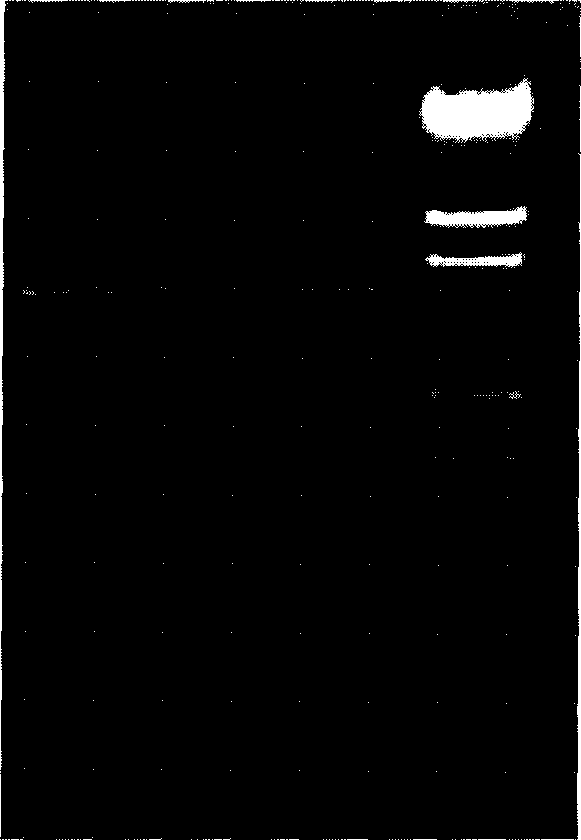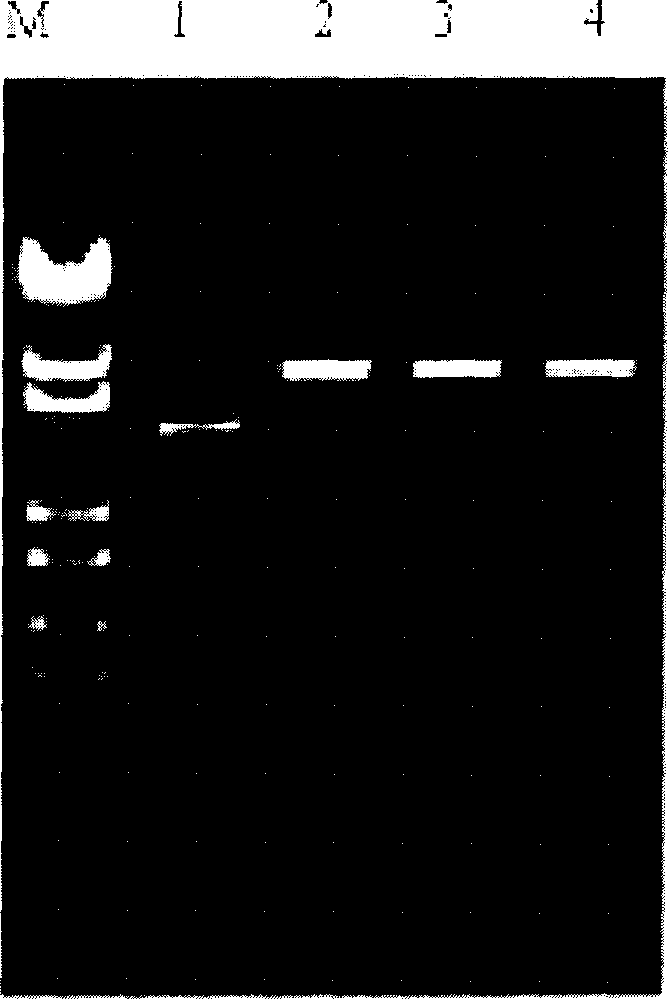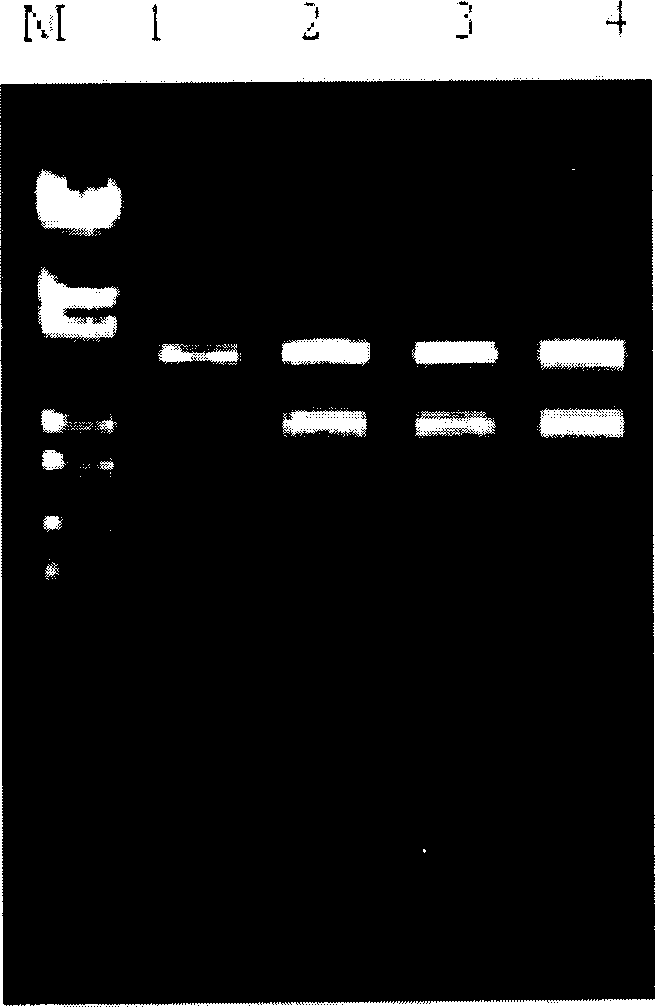Transduction peptide-insecticidal crystal protein fased protein and its corresponding sequence and use
A technology of insecticidal crystal protein and fusion protein, applied in the field of genetic engineering, can solve the problems of loss of receptor protein, decreased sensitivity of target sites, loss of insecticidal efficacy, etc., and achieve high insecticidal activity
- Summary
- Abstract
- Description
- Claims
- Application Information
AI Technical Summary
Problems solved by technology
Method used
Image
Examples
Embodiment 1
[0042] Embodiment 1, PTD and Cry1Ac gene vector construction scheme
[0043] When designing the base sequences of TAT and Rev, triplet codons highly expressed in Escherichia coli were selected. Design a cohesive linker connected to the pET21b vector EcoRI and NdeI restriction sites, and add a BamHI restriction site to the primer. The base sequence of PTD is as follows:
[0044] The gene primers for the toxic region of the Cry1Ac toxic protein are designed as follows, where Acb is the 5'-end upstream primer with a BamHI restriction site, Acs is the 3'-end downstream primer with a SalI restriction site, and the target gene fragment called out by PCR Ligated with pET21bPTD. Acn is the 5'-end upstream primer with NdeI restriction site, Acs is the 3'-end downstream primer with SalI restriction site, and the target gene fragment called out by PCR was ligated with pET21b as a control.
[0045] Acb 5'cgcggatccggataacaatccgaacatc3'
[0046] Acs 3′gctgagtcactacttgcgcagctgcgca5′
[...
Embodiment 2
[0049] Embodiment 2, the connection of PTD and pET21b carrier
[0050] The TAT peptide and Rev peptide were connected with the corresponding EcoRI / NdeI digestion products of pET21b, and transferred to JM110 host bacteria, and the plasmid DNA was extracted for detection, because the BamHI site in the pET21b plasmid had been excised, and the synthesis of TAT and Rev peptides A BamHI site was inserted. Therefore, BamHI restriction endonuclease can be used for detection, and the results are shown in figure 1 . It was shown that both PTDs were successfully linked to pET21b. The corresponding strains were sequenced by Shanghai Shenyou Company and Dalian Bao Biological Company, which was consistent with the designed synthetic sequence.
Embodiment 3
[0051] Embodiment 3, the cloning of CryIAc functional gene
[0052] Using the HD-73 model strain plasmid as a template, PCR amplification was carried out, and an amplified band of about 2.2kb was obtained. The product was recovered from the column, extracted and purified, digested with BamHI / SalI, connected with the BamHI / SalI product of pET21b, pET21bT, and pET21bR with an appropriate system, and transformed into Escherichia coli JM110. The obtained positive clone spots were detected by BamHI single enzyme digestion and BamHI / SalI double enzyme digestion (see figure 2 , 3). The results showed that the CryIAc functional gene fragment was successfully connected to the corresponding digestion products of pET21b, pET21bT, and pET21bR. Then, using the plasmid DNA of pET21bIAc, pET21bTIAc, and pET21bRIAc as a template, PCR amplification with CryIAc functional gene primers can obtain a 2.2 kb PCR product, indicating that the inserted fragment should be a CryIAc functional gene. ...
PUM
| Property | Measurement | Unit |
|---|---|---|
| diameter | aaaaa | aaaaa |
Abstract
Description
Claims
Application Information
 Login to View More
Login to View More - R&D
- Intellectual Property
- Life Sciences
- Materials
- Tech Scout
- Unparalleled Data Quality
- Higher Quality Content
- 60% Fewer Hallucinations
Browse by: Latest US Patents, China's latest patents, Technical Efficacy Thesaurus, Application Domain, Technology Topic, Popular Technical Reports.
© 2025 PatSnap. All rights reserved.Legal|Privacy policy|Modern Slavery Act Transparency Statement|Sitemap|About US| Contact US: help@patsnap.com



